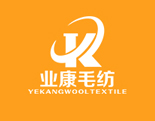

FAQ
Frequently Asked Questions


Yercan Textile Shares What Chenille Yarn Is!

Yercan Textile Shares the Advantages of Acrylic Yarn!

Yercan Textile Discusses the Difference Between Silk and Cotton Threads!

Yercan Textile shares what fancy yarn is!

What are blended yarns and wool blended yarns?

What should you pay attention to when wholesaling yarn?

What are the differences between acrylic yarn and wool yarn?

What are the advantages of acrylic fiber tops?
Yercan Wool Textile's acrylic fiber top production method uses a break-through process. Acrylic filaments produced in the spinning workshop are used as raw materials, broken into various specifications of acrylic fiber tops by a break-through machine in the top workshop, and then packaged, weighed, and shipped.
This product possesses all the excellent properties of acrylic fiber, resulting in full-bodied tops with excellent warmth retention. It has good elasticity and warmth retention; a soft and fluffy feel; a lower specific gravity than wool; high strength (higher than wool); good dyeing performance; bright colors; resistance to mildew and moths; and good corrosion resistance, oxidation resistance, and lightfastness.
The management team of Pujiang Yercan Textile Technology Co., Ltd. consists entirely of individuals with college degrees or above, all with over ten years of experience in their respective positions within the company. It is an experienced and young team. Leveraging the convenience of the Yiwu Small Commodities Market and the ports of Ningbo and Shanghai, as well as its own import and export rights, the company not only maintains industry order but also leads Yiwu wool textile enterprises in expanding into overseas markets.

How to Identify Yarn Fibers? Yercan Wool Textile Shares with You!
Yercan Textile shares two commonly used methods for identifying yarn fibers:
I. Tactile and Visual Inspection Method
This method involves touching the fibers with your hands and observing them visually, relying on experience to determine the fiber type. This method is simple and requires no instruments, but it demands extensive experience from the inspector.
1. Feel and Strength: Cotton and linen feel relatively stiff, while wool is very soft. Silk, viscose, and nylon have a moderate feel. When pulled apart, silk, linen, and cotton feel very strong; wool and viscose fibers feel weaker.
2. Elongation: When stretching the fibers, cotton and linen have a relatively small elongation; wool and acetate fibers have a relatively long elongation; silk, viscose, and most synthetic fibers have a moderate elongation.
3. Length and Uniformity: Natural fibers have poor length and uniformity, while chemical fibers have better length and uniformity. Cotton fibers are fine and soft, and very short. Wool is longer, crimped, soft, and elastic. Silk is long and fine, with a unique luster. Linen fibers contain gum and are stiff.
4. Weight: Cotton, linen, and viscose fibers are heavier than silk; nylon, acrylic, and polypropylene fibers are lighter than silk; wool, polyester, and vinylon acetate fibers are similar in weight to silk.
II. Burning Method The burning method is a common method for identifying yarns, utilizing the characteristics exhibited by textile fibers during combustion.
Cotton: Ignites easily near a flame, burns relatively quickly, leaves ash with a paper-like smell, very little ash, soft, and black or gray in color.
Wool: Melts and burns, difficult to continue burning, self-extinguishes, smells like burning feathers, ash is brittle and black in color.
Silk: Makes a hissing sound when burning, difficult to continue burning, self-extinguishes, and splatters when burning, smells like burning feathers, ash is brittle and black in color.
Linen: Ignites easily near a flame, makes a popping sound when burning, continues burning and produces smoke, leaves ash, and the ash is black or gray in color.
Adhesive: Ignites easily near a flame, burns extremely quickly with no ash, produces a chemical odor when burning paper, and leaves no ash except for those without luster.
The management team of Pujiang Yercan Textile Technology Co., Ltd. consists entirely of individuals with college degrees or above, and all have over ten years of experience in their respective positions within the company, forming a young and experienced team. Leveraging the convenience of the Yiwu Small Commodities Market and the ports of Ningbo and Shanghai, as well as its own import and export rights, the company maintains industry order while leading Zhejiang wool textile enterprises to expand into overseas markets.
